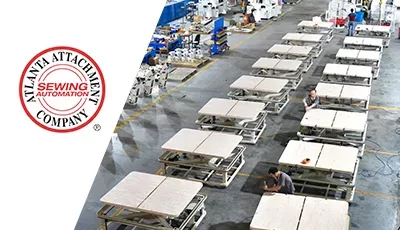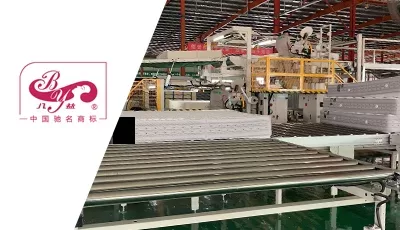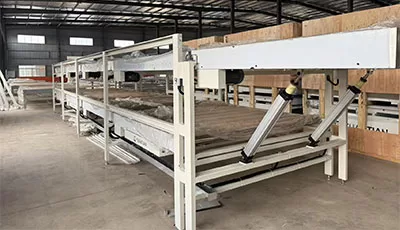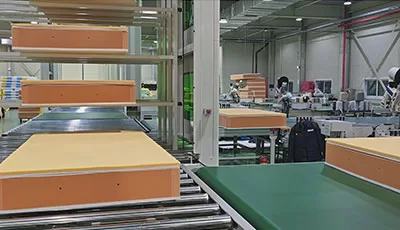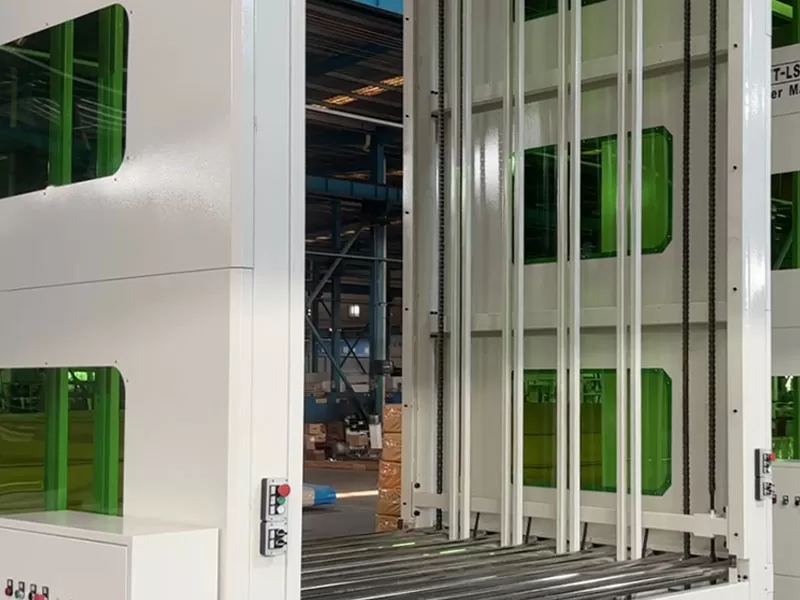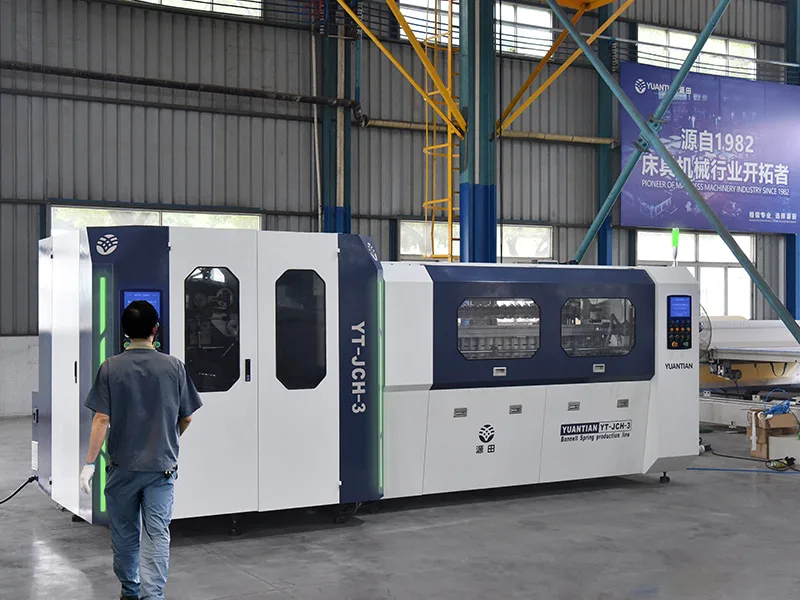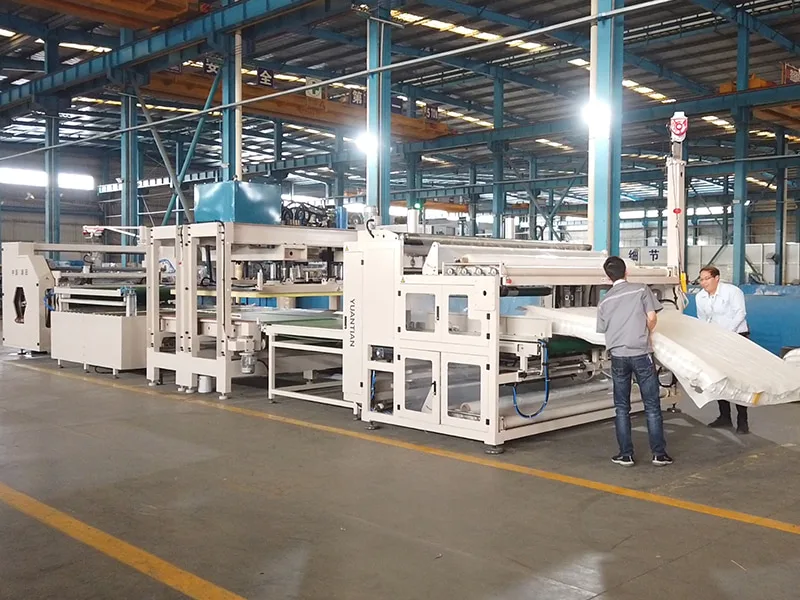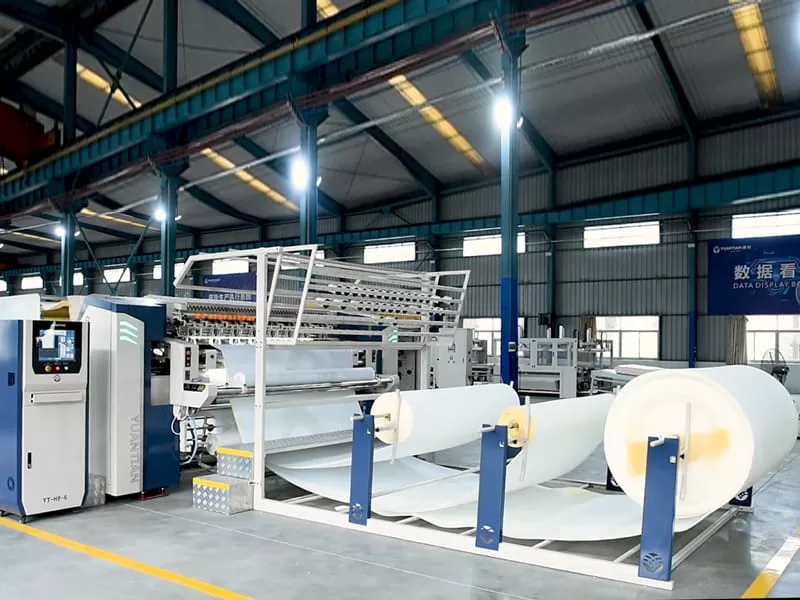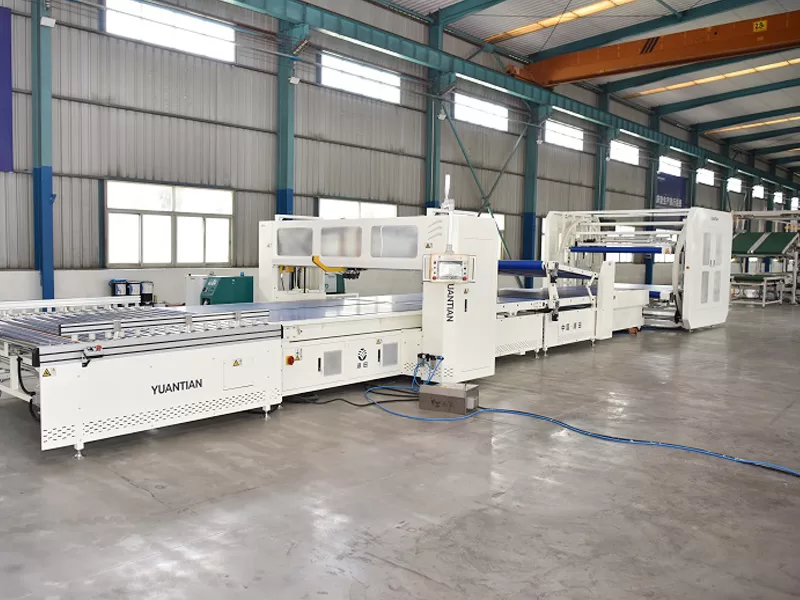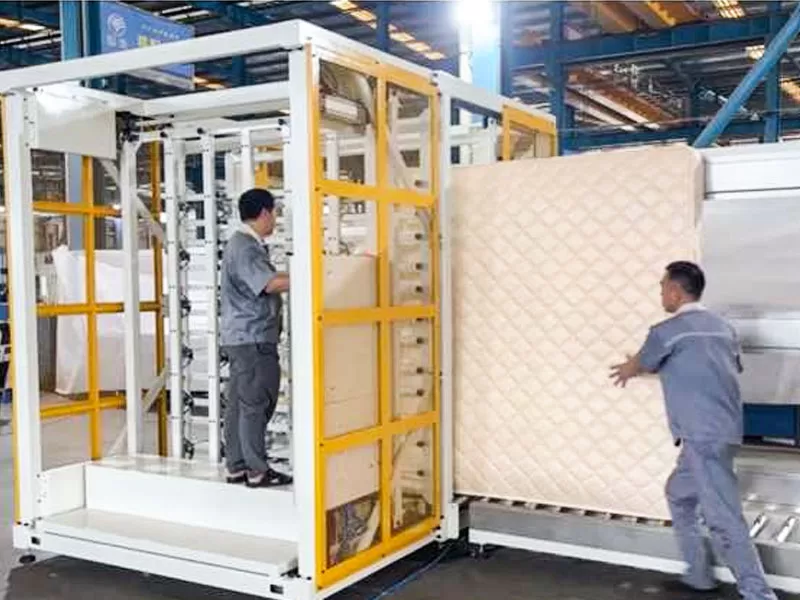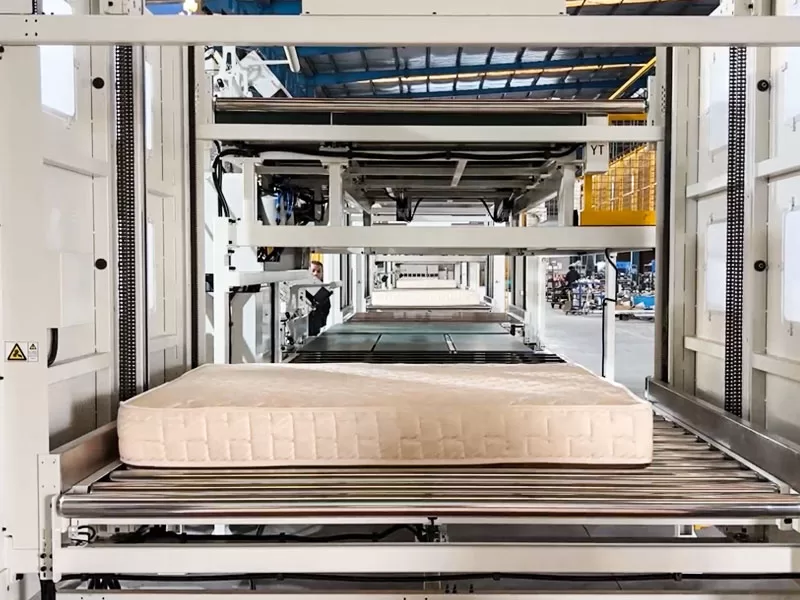- Home » A Comprehensive Guide to Mattress Roll Packing Machines
Among the most important innovations in the bedding industry today is a mattress roll packing machine. It plays an important role in improving operation efficiency and reducing costs associated with mattress storage and shipping. With the rise of e-commerce and a greater need for more cost-effective methods of transportation, mattress manufacturers are increasingly using these machines to meet consumer demand while maximizing space, reducing logistics costs, and improving product presentation.
What is a Mattress Roll Packing Machine?
A mattress roll packing machine compresses, rolls, and tightly packs mattresses into a compact form for transportation and storage. These machines are highly used in the bedding industry for minimizing mattress size, which has conventionally occupied significant space in warehouses and shipping containers. It reduces the volume of the mattress by compressing and tightly rolling it, which makes shipment and storage easier and less expensive.
It is essential that mattress roll packing machines be capable of dealing with various mattress types, such as memory foam, innerspring, and hybrid models. Most of the machines normally operate on a mix of compression and vacuum to make sure that the mattress stays tightly rolled and securely packed. This also makes it compact, so the mattress will be prevented from exposure to dust, dirt, and moisture when being transported.
How Does a Mattress Roll Packing Machine Work?
Packed through mattress roll is essential for critical success in packing and making a mattress ready for shipment. It starts with the placement of the mattress into the machine, followed by compressing the said mattress. This could involve either a purely mechanical type of pressure or vacuum suction as regards the machine’s specification. At this point, some of the air within will be removed to result in a reduced size.
Following compression, the mattress is then rolled tightly, with the assistance of rotating rollers or other automated systems designed to ensure a uniform, secure roll. The rolling should be done with much care to avoid any damage to the internal components of the mattress, such as foam or springs. The machine may also have automated sensors that monitor the rolling process and make sure the mattress is rolled down to the correct size.
Once rolled, the mattress is sealed, often with vacuum technology that sucks out the remaining air to keep the mattress tightly packed. Next, the mattress is sealed in an airtight or plastic bag to ensure it remains in its compressed form during storage and transport. Depending on the machine used, additional protective layers may be applied to prevent punctures and damage.
Most of the high-end systems automatically handle the process, with little or no human interference, which makes the whole process error-free and time-saving. The final product is a tight, sealed mattress ready for shipment to wholesalers or directly to the consumer.
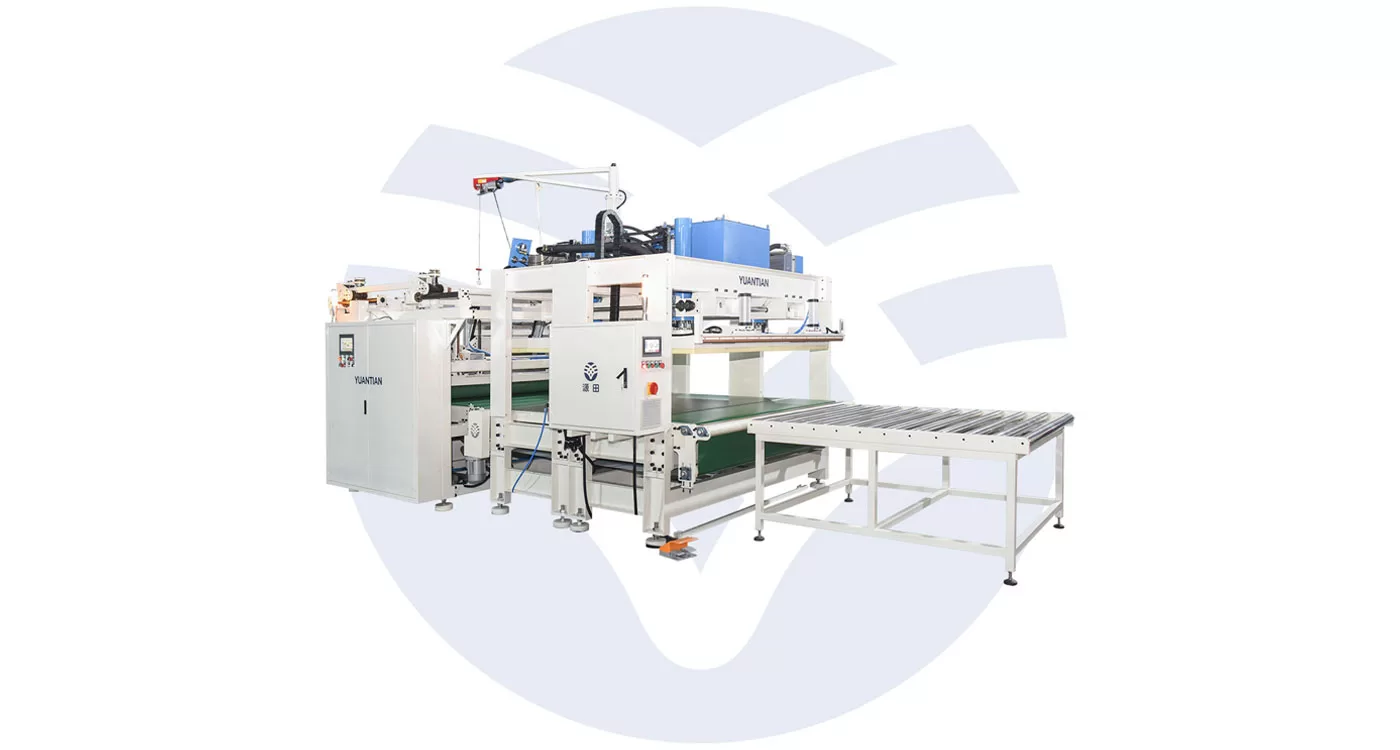
Types of Mattress Roll Packing Machines
Mattress roll packing machines are generally available in several configurations targeted at different levels of production. There are primarily two types of systems: semi-automatic and fully automatic machines.
Semi-Automatic Machines
Semi-automatic machines require the operators to input them manually, placing the mattress into the system and sometimes adjusting the settings to different sizes of mattresses. Though not as fast and fully automated, semi-automatic machines can still be effective in the case of smaller manufacturers or companies with low volumes of production. These systems are cheaper and can achieve appreciable space-saving benefits for mattress storage and transportation.
Fully Automatic Machines
The fully automatic roll packing machines are meant for high-volume operations where efficiency and speed are very important. This machine can automatically perform tasks from compression and rolling to sealing and packing without the intervention of any human being. The fully automatic machines will also have robotic arms, which are equipped with advanced sensors. These machines are more efficient and minimize labor input, hence, they are more appropriate for companies with huge production volumes.
Benefits of Mattress Roll Packing Machines
The adoption of mattress roll packing machines offers several advantages to mattress manufacturers, distributors, and retailers:
Space Optimization
One of the most considerable benefits of using mattress roll packing machines is that this machine reduces the amount of space required to store and ship mattresses greatly. With a rolled-up mattress, manufacturers can fit more units into one container and save on shipping and storage costs.
Cost Efficiency
Because mattresses are compressed and rolled, this could allow them to be sent in smaller, more compact packages, which reduces freight costs. In addition, such machinery increases the speed of packing, therefore reducing labor costs, while increasing overall operational efficiency.
Improved Shipping and Handling
Mattresses being rolled and sealed make them easier to maneuver during transport. There is less damage during shipment, and stacking in warehouses is easier than with a non-rolled product.
Better Product Presentation
The process of compression and roll packaging makes the product more attractive to consumers. When the mattress is unrolled, it is often smaller in size and has a neat, clean look that can enhance customer satisfaction.
Environmental Impact
The lessened volume of the packed mattress allows more units to be transported using fewer resources. This leads to lesser carbon emissions and helps manufacturers achieve their goals of sustainability.
Ease of Distribution
Mattresses packed in rolls are way more flexible to distribute. Online and brick-and-mortar retailers alike can easily store and send out these mattresses, even in places with minimal area.
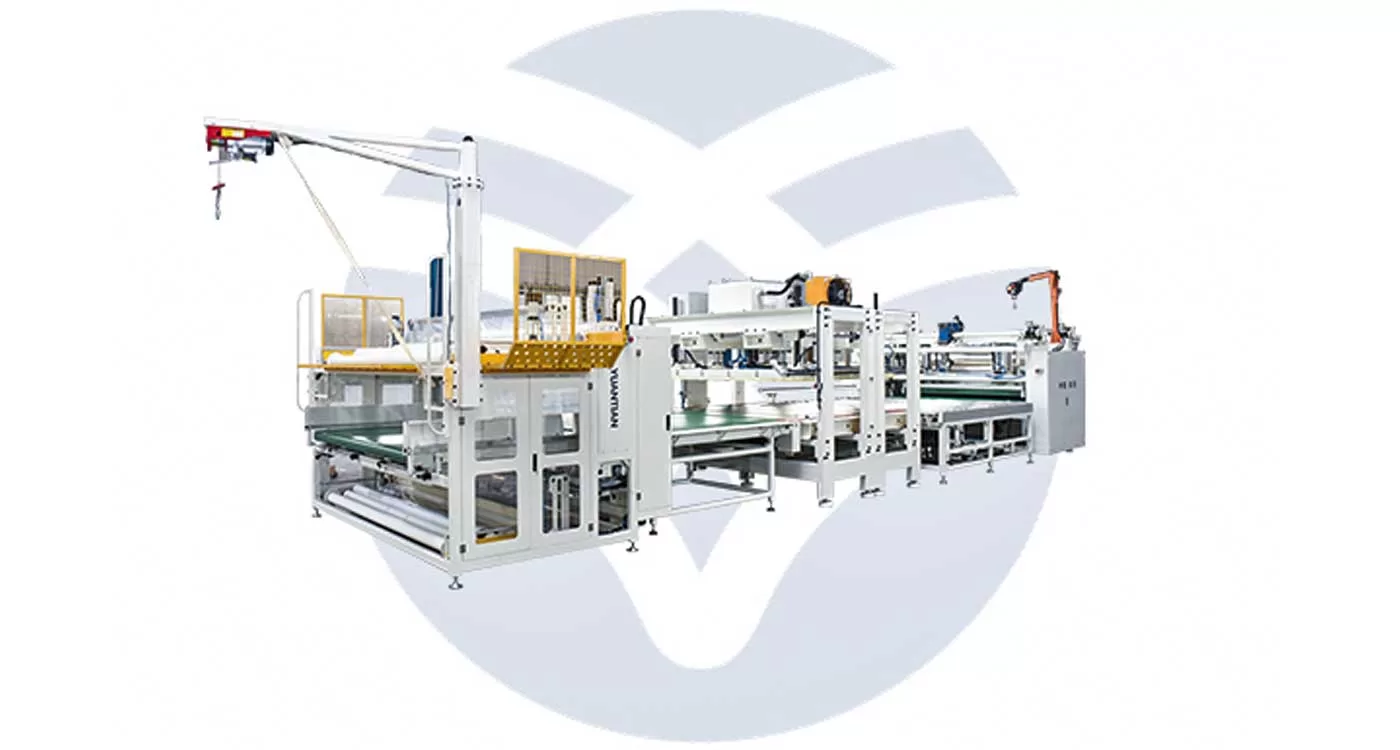
Considerations When Choosing a Mattress Roll Packing Machine
In choosing a mattress roll packing machine, the manufacturer has to consider a variety of factors to ensure that he gets the right equipment for his needs. First among the things to consider is production capacity. For high volumes of production, a fully automatic machine with faster cycle times may be needed, while smaller operations are better suited to semi-automatic machines.
Other important factors are the size compatibilities of the machine, in that different mattress types and sizes have their various methods of packing. This will therefore raise the need to ensure such a machine is appropriate for the particular products that one produces. Also important will be an assessment of the required maintenance of the machine: an efficient, easy-to-service machine reduces downtimes while increasing overall productivity.
The cost of the machine becomes another factor. Fully automatic machines, highly advanced in features and high in output, come with a heavier price tag. A manufacturer has to balance the savings on shipments, storage, and labor against the investment cost to come to a decision on buying the machine.
Conclusion
A mattress roll packing machine is an indispensable machine that modern mattress manufacturers need. Mattress roll packing machines efficiently pack and ship mattresses with effective cost savings. These machines allow for semi-automatic or fully automated systems that reduce storage and shipment costs while improving operation efficiency and product presentation. With the continuous development of the bedding industry, these machines will have an even greater role in helping companies meet the demands of a globalized and online-driven market.
Связанные с ними товары
